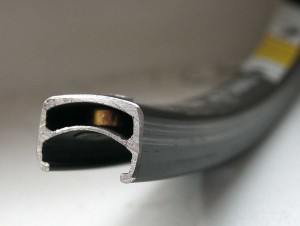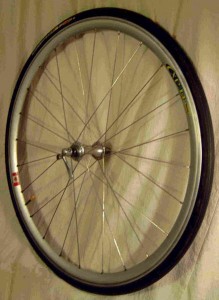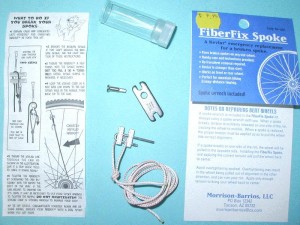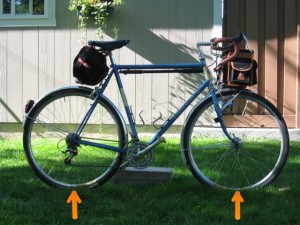Every size of the Long Haul Trucker bicycle, from the tiny 46cm bike to the gargantuan 64cm bike is available with 26″ wheels. 56cm and larger frames also come in 700c wheel versions while 54cm and smaller bikes only come with 26″ wheels. Why do they do that? Why can’t you buy a smaller bike with 700c wheels? And how do I choose between 26″ and 700c wheels on my 62cm Long Haul Trucker?
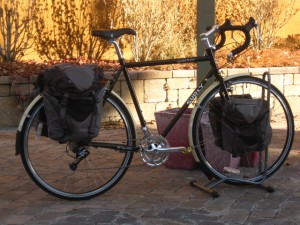
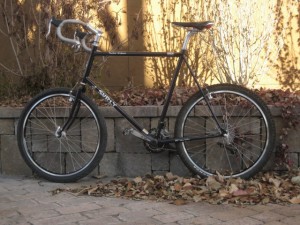
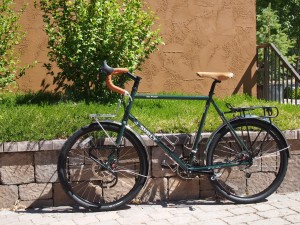
First, some bike design theory:
As a bike frame shrinks in size 700c wheels become problematic in a couple of ways. Georgina Terry from Terry Bicycles does a fantastic job of qualifying those problems in her videos about Bicycle Design
With a given wheel size- in this case 700c- there is a limit to how low the top tube can be before you run out of head tube and how short it can be before the rider’s foot starts hitting the front wheel.
Some bike manufacturers call some of their smaller bikes “women’s specific” and paint them in girly colors, which is nothing less than a marketing gimmick. Mainstream bike companies assume that the market will demand 700c wheels on their “road bikes” and so they compromise the design of the smaller bikes by changing the angle of the seat tube to make the top tube shorter and they change the angle of the headtube to mitigate toe overlap with the front wheel, which also helps make the top tube shorter.
A better way, and the way good bike designers like Terry, Rivendell and Surly do it is to change to a smaller size wheel as the frame size shrinks. Rivendell and Surly change both front and rear wheel sizes while Terry uses a smaller front wheel with a 700c rear wheel.

A truism I hear all the time is that 700c wheels are faster than 650b or 26″ wheels. But I don’t buy it. That’s what they make gears for. A 26″ wheel will be spinning faster than a 700c wheel would be at the same velocity so the rider might be in a higher gear. Surly makes the analogy of a tractor compared to a Formula One car….the controlling factors being gearing, suppleness and quality/type of tire and the motor.
What about handling of a bike with the smaller tires? Georgina Terry simply says that the front end is designed for the a smaller tires and so the handling isn’t twitchy. One of those design features taken from the Surly geometry charts is a slightly more slack head tube on the 26″ bikes which results in a similar trail when compared to the 700c bikes. I do think that a bike with 26″ wheels rides differently than one with larger wheels, simply because of that gyroscopic thing.
The reason Surly decided a couple years ago to offer every size LHT and Disc Trucker in 26″ wheel versions is that the 26″ wheel size is more ubiquitous around the world and replacement wheels and tires should be easier to find. So if you plan on touring in countries outside the US, 26″ wheels might be a good way to go. Come to think of it, there may more 26″ wheels and tires available here too in out of the way places. I’m reminded of the story of the couple traveling between Portland and Boise when they accepted a ride in a pickup truck and her bike fell out at 60 MPH. The rear wheel was ruined but their hosts had an old mountain bike in a shed from which she was able to salvage a serviceable wheel.
So, to summarize:
-Small bike…small wheels
-Larger bike and desire to find replacement wheels/tires wherever one may tour (or desire to run really fat tires) …26″ wheels.
-If you think 26″ wheels on bigger bikes look funny….700c wheels
-If you are convinced that 700c wheels are somehow faster…get those (assuming, of course, you think going faster is a good thing)

